
Estela Casanto: the traditional healer who died defending her territory
On the morning of Wednesday, March 10, 2021, Estela Casanto, 56 had run out of tears. The interpretation of a nightmare she had had two nights earlier triggered the sobs of her last days.
Elea Morales (43), Estela’s eldest daughter, says her mother predicted her death. “She told me she had dreamed of a plank, […] and that she had sat on it. I asked her what that meant and she told me that it was ‘bad to sit on a plank.’ My mother dreamed she was going to die,” she recalls.
For Estela, the plank symbolized her mother’s coffin.
That day, Estela Casanto Mauricio—the tiny woman who had snatched Asháninka lives from death—said goodbye to her grandchildren, children and, finally, to her sons- and daughters-in-law, to walk towards her own death. My mother never hugged us, but that day, she hugged everyone as though she was saying goodbye,” says Elea Morales.
The founder of Shankivironi —an indigenous community in the central rainforest of Peru—left her daughter’s house that morning. She walked for an hour along the gullies of the Shirarini River, following the ancient route her ancestors had traveled, yet which had been forbidden for some years, and to which she would never return.
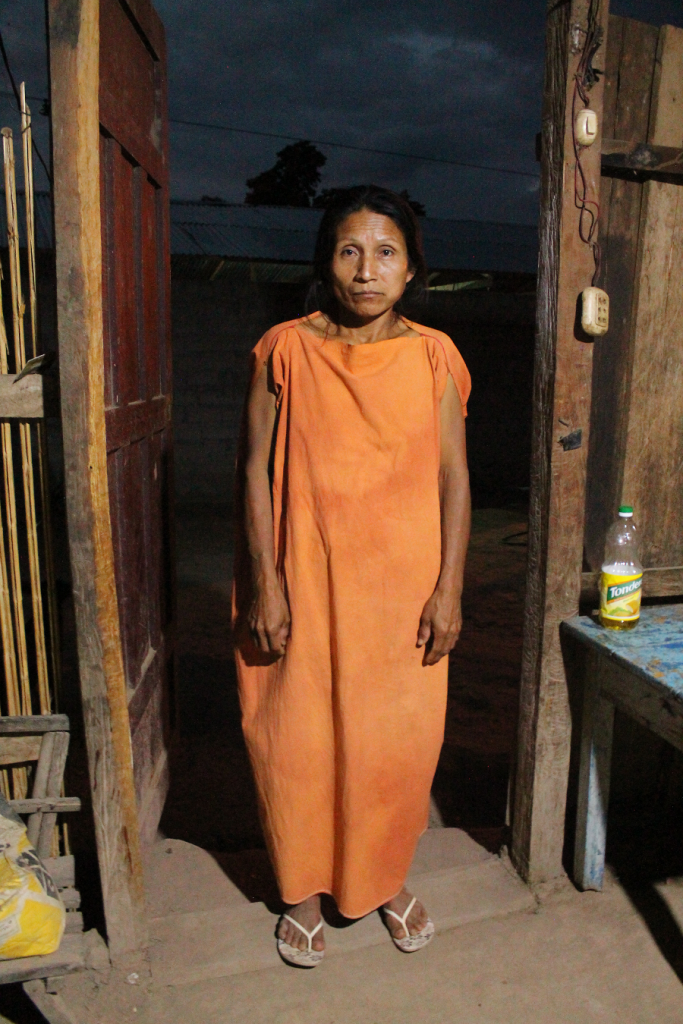
Elea Morales, the eldest daughter of Estela Casanto, poses at the door of her home. She remembers that her mother learned about ancestral medicine and healed members of her community. Photo: Anthony Quispe/Convoca.
A DEPRIVED CHILDHOOD
On August 28, 1964, as a child, Estela, together with her parents Carlos Casanto and Rosa Mauricio, walked along the path to the vast plot of land they had inherited.
As a young girl, she learned to help her mother, clean house, cook cassava, prepare masato (a traditional beverage) and look after her siblings. She was the fourth of seven surviving children. Getting an education was not an option.
“[…]
“My grandfather used to punish her. […] Sometimes when he couldn’t bear it any more, her little brother would cry. Once, my grandfather found out, grabbed her, and threw her into an orange grove,” Elea recalls that her mother told her. Estela had a difficult childhood.
Her strict father Carlos, bound by custom, betrothed the 13-year-old Estela to Julio Morales, aged 17. “My grandfather forcibly handed her over. Before, it was customary to give daughters away. A man’s son used to come and say: ‘I love your daughter’ and that’s how my grandfather gave her away,” explains Elea.
The young Estela made the transition from girlhood to womanhood and was a mother before she was 15. She had my sister, the second child, at 16, and Irma (the third) at 17,” recalls her first-born, Elea.
Estela’s last two children Hernelio (28) and Edith (24) were born much later, when her body was fully mature. By then, her dreams and medicinal herbs had already saved the lives of dozens of indigenous people, during the defense of the Asháninka territories against two terrorist groups in 1989.
THE DREAMS
At the end of the 1980s, the Túpac Amaru Revolutionary Movement and the Shining Path armed group wanted to settle in the Central Rainforest. “They came to the territory in search of new spaces to extend the armed struggle, […],” explains anthropologist Hanne Veber, in Yotantsi Ashi Otsipanki (Stories for our Future).
By 1988, according to the article Las Rondas Asháninkas y la Violencia en la Selva Central (The Asháninka Rounds and Violence in the Central Rainforest) by anthropologist Oscar Espinoza, the armed forces of terror controlled the valleys of Perené, Ene and Tambo (Satipo and Chanchamayo), in the central region of Peru. There they looted communities and assassinated indigenous leaders.
Early one morning in 1989, Elea Morales remembers her mother had had to wake up at five in the morning to treat the wounded. The defense of the Asháninka Army in Yaviridoni (a conflict zone) had not been successful, and her uncles and father had nearly been killed. “I don’t know how they managed to hide. […]. My mother’s cousin was seriously ill. […] A bullet went through my father’s head,” says Elea.
The Asháninka Army was formed that year in response to the assassination of the leader, Alejandro Calderón, by the MRTA. “They armed themselves with shotguns, bows and arrows, […] to expel the MRTA and other armed groups,” explains anthropologist Veber.
The 2003 Truth and Reconciliation Commission (TRC) Report detailed the consequences: “[…] some ten thousand Asháninkas were forcibly displaced, six thousand were killed and five thousand were captured by the Shining Path.”
Estela Casanto, from Shankivironi, formed part of the group of traditional healers who treated the deadly wounds inflicted by that army.
At that time, at the age of 24, Estela used to dream of traditional treatments for her patients. It all began with a pain in her body. At first, she looked to the healers for a cure for her hernia, but it was in her dreams that she heard: ‘That herb will do you good,’” recalls her daughter Elea. From that day onwards, Estela’s dreams saved lives.
She gradually became acquainted with the effects of plants, the secrets of the womb and new life, and learned how to manipulate a fetus months before delivery. She helped indigenous women and settlers who wanted to have a natural birth.
The healer charged a flat fee for the sessions: the patient’s desire to be cured. “He is going to heal you as soon as I put my hand on you,” she used to say. Elvis Jayunga, the current lieutenant governor of the community, told the police of Estela’s role “as the head of indigenous women.” In the end, Estela’s reward was her recognition.
Estela once tried to pass her traditional knowledge on to her daughters, but as the rebellious teenagers they were at the time, Elea, Erlinda and Irma refused to be taught. “That weighs on me. My mom used to explain things to us, but we pretended we didn’t care. We ignored her,” Elea is ashamed to admit.
THE SETTLER NEIGHBOR
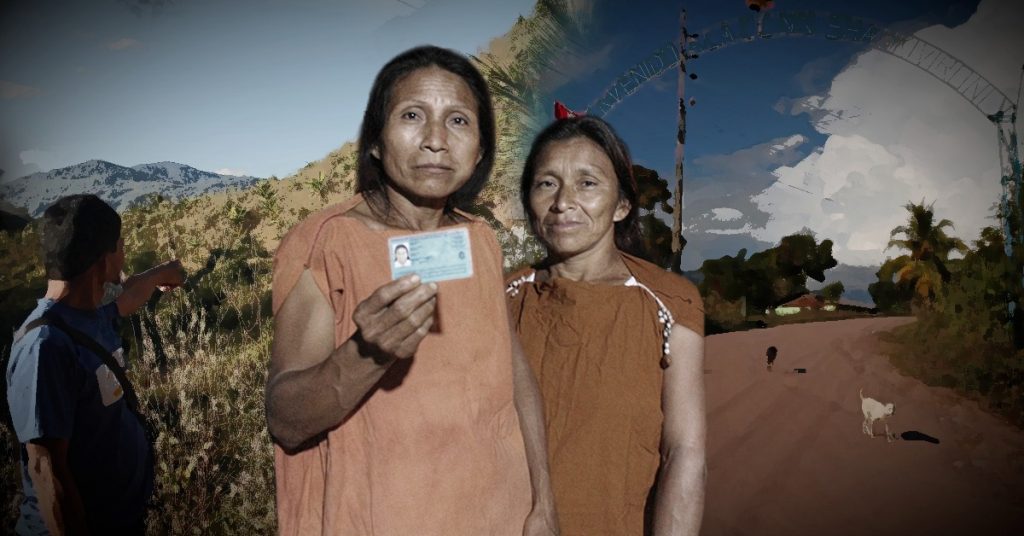
Elea and Erlinda Morales, daughters of Estela Casanto. For her relatives, she was murdered, for the authorities, her death is still under investigation. Photo: Anthony Quispe/Convoca
By the 1980s, the first settlers—peasants from Andean lands—were occupying native lands. They bought the lands of the sons-in-law and sons of the elders, the indigenous people who had founded Shankivironi. Carhuallanqui, Taype, Huaraca, Montes, Huamaní, Poma and Machuca were the first foreign surnames that came to the community in 1985.
The first to sell were “the Machari Mañuri (a predecessor of the current chief, Alfonso Machari). They sold their land, despite being indigenous people,” declares Anila. The property adjacent to Estela Casanto’s, about 100 meters away from her house, underwent a similar transition. “It belonged to my great-uncle,” explains Elea.
After the death of an indigenous person, farms would immediately be handed over to their sons or sons-in-law, but these ones were left ownerless. As the land had not been reclaimed, its rent or sale became the responsibility of the community’s governing board.
Accordingly, between 1983 and 1985, the property was transferred to Gregorio Cueva, Estela’s first settler neighbor. “A settler arrived; […] Through the community, he asked for the plot of land for farming,” recalls Anila Boliviano, a former deputy community leader.
Over time, Cueva settled down and had daughters and sons-in-law, who subsequently sold the lands they had inherited. This is how the current owners, the family of Mildred Vargas, arrived.
Based on Anila Boliviano’s description, of the five sectors comprising Shankivironi, two underwent colonial territorial expansion: Alto Shankivironi and 7 de junio. Estela did not welcome this foreign invasion and was dubious about it. “When I was little, my mother told me […] not to consider selling my farm, […] You never know what kind of person will turn up,” explains Elea.
“‘Sell me your land’ (the neighbor asked her) but she refused, so he said: ‘Someday, that land will be mine,’ as if it were a threat,’’ recalls Erlinda Morales, Estela’s second daughter. They even offered her the sum of “40,000 soles,” says Elea. The land Mildred and her family wanted is on the border between the Bajo Shankivironi and San Carlos sectors, about 100 meters away.
THE CONFLICT
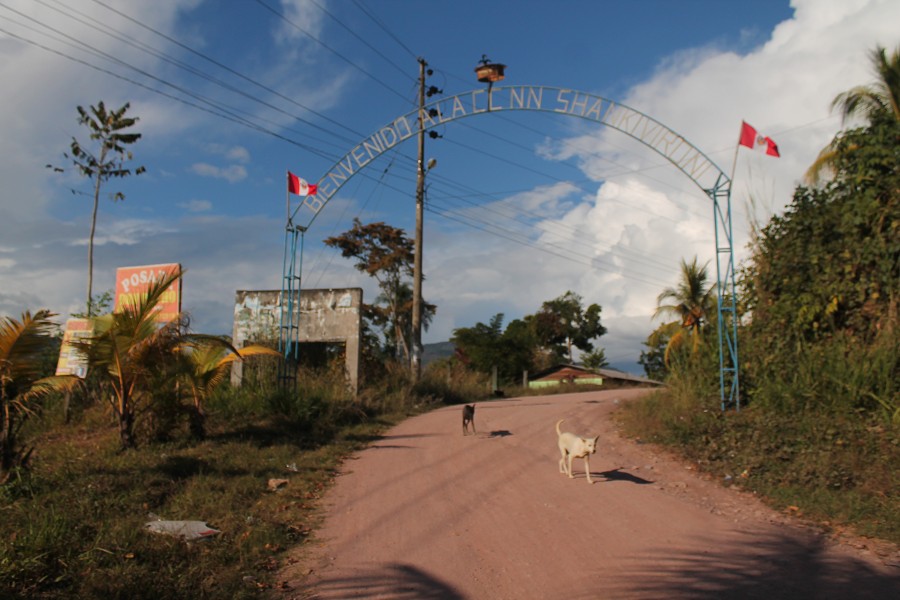
Entrance to the community of Shankivironi, in the Junín region, where the indigenous population lives with the settlers. Photography: Anthony Quispe.
On the afternoon of December 22, 2020, Estela went to Bajo Shankivironi to share her troubles with Anila Boliviano. She felt uncomfortable, but it was not the first time she had recounted her frustration.
The neighboring settlers who lived on the other hill harassed her. They prevented her from walking along the ancestral path, stopped her from fishing on the banks of the Shirarini River and she was not allowed to drink the water from a supply point they shared. “I have problems with the woman (Mildred),” Anila remembers her saying.
Once Estela was coming down from her farm with a sack full of firewood. On the way, the neighbors accosted her, grabbed the sack from her and began to empty it out. Aunt Estela lived alone, and since she was alone, they humiliated her,” she recounts.
This story did not go unnoticed, according to Enrique Casanto, former leader of Shankivironi and Estela’s brother. He points out that she complained to the entire community, “but they ignored her.”
Estela’s neighbors came to the community “about two or three years ago,” estimates Erlinda, adding that the first contact they had with her mother was to delimit their territories. “If possible, I will build a small stile there so that you can go through,” Elea recalls them telling her mother.
Elena did not keep silent, says Elea, and retorted: “You know what, I belong to this community. You do not have the right to stop me from going through. I defend my territory. This land is mine; I was born here.”
But the conflict not only involved the limits of the land, but also the water supply point shared by the two plots of land. “[…] He built a whole pipe on the sly.” When Estela found out, she complained to him, “How can you do this to me […]? Respect, be respectful,” says Elea.
That same month, in December, Estela was diagnosed with Covid-19. The traditional healer was treated for a fortnight with ginger, eucalyptus, and piper aduncum infusions. That got rid of the illness, but not the harassment. From February 23 onwards, the healer had to fend for herself. Her grandson Frank had fallen ill, and the entire family was forced to return to the Bajo Shankivironi house for his treatment for at least two weeks.
It did not occur to any member of Estela’s family that that fortnight would be her last.
THE LITTLE CAVE
On the afternoon of Thursday, March 11, Estela was preparing giant dry branches to repair her roof. Night was falling and Julio Aurelio, her son-in-law, was finishing helping her. Suddenly, his mother-in-law began to cry and said, I think I’m going to die.” It took Aurelio several minutes to calm her down.
The son-in-law said goodbye to his mother-in-law. He spotted a young man accompanied by a woman in the neighbor’s house and left without knowing he would be the last person to see Estela Casanto alive.
The next day, the sky in Shankivironi wept bitterly. Julio Aurelio set off from his house at nine in the morning for the farm his mother-in-law had left him.
Estela Casanto’s house is small and made out of rustic material such as sticks and reeds with a thatched palm roof, made from the asháninka plant, without electricity or drinking water. Aurelio went by his mother-in-law’s house on the way to his farm but did not see her. He imagined she was asleep. He called her and got no reply, so assuming she was in the bathroom, he went off to work.
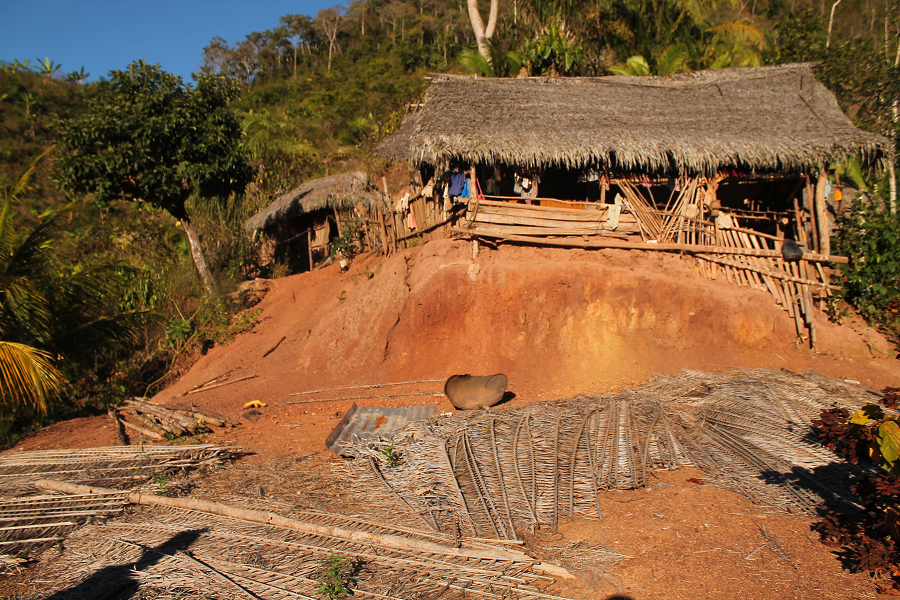
Estela Casanto’s house is at the top of a steep area. At the bottom are the branches that she collected to repair her roof. Photography: Anthony Quispe.
He went back at 11 a.m. to have lunch with his mother-in-law. He arrived at the house, entered the room, and found everything intact. Estela’s boots were in the usual place, even though she never went out without them. Aurelio found all this suspicious. “I sensed something had happened to my mother-in-law,” he recalls.
A few minutes later, in the ravine about 10 meters from the house, Aurelio found footprints in the damp earth, and began to follow them. “I thought I might find something,” he says. And so it was that at one point on the cliff he found a footprint, “as though she had slipped or rolled,” explains the son-in-law.
Suddenly, Aurelio wanted to follow the tracks, but he stopped short. He was scared and did not want to continue. Just before noon, he decided to call his wife and children. Wanir Aurelio (23), his first-born, turned up after about 20 minutes. After a brief explanation from his father, Estela’s grandson began searching the house. In the process, he found blood between the sheets and the mosquito net.
“They must have killed her,” Aurelio concluded sadly, at that point.
Almost at the same time as the blood was discovered, Elea Morales arrived at her mother’s home. With no time to grieve, she and her husband followed the path of the river, looking for signs of Estela while her grandsons Werner and Frank walked towards the farm.
Along the way, the youths found boot prints: “male, Venus brand, approximately size 42,” Werner said in a police statement. These footprints eventually led to the banks of the Shirarini River, and after walking about 10 meters upstream, they found her. “Approximately 800 meters away,” notes Estela.
On the banks of the river, among the bushes and undergrowth, sheltered by stones, and embedded in a small cave, they saw her. “[…] She was lying on her front, with her legs folded underneath her as if she were kneeling, with her arms next to her body,” Werner narrates.
The ordeal had begun. In their grief, they thought of notifying the authorities; However, Werner could not bear to see his grandmother in such conditions. “She is not an animal,” Aurelio recalls that his son said. Estela’s inert, muddy body was clothed in a pink coca bag with flowers, slung across a long-sleeved, white polo shirt, and blue jeans, with no shoes.
Werner picked up his grandmother and carried her partway, and then handed her over to his father, who carried her the rest of the way home. Once there, they decided to bathe her, dry her, and dress her in her blue kushma (traditional clothing). Almost immediately, news of her death reached the community and district authorities and by virtue of proximity, the national press. Shankivironi was crying again.
THE ESCAPE
On Friday, March 12, 2021, at four in the afternoon, members of the Peruvian National Police (PNP) arrived at Estela Casanto’s house, and found her lifeless body lying on the bed, covered with a blanket adorned with the Peruvian flag.
“I saw that my aunt’s nose had been crushed and that her face was bruised; I was shocked,” recalls Doris Casanto.
Meanwhile, at the front, Enrique Casanto noticed that the neighbors were behaving suspiciously after the police officers arrived. The neighbor […] looked uncomfortable […]. At that point, I think they were talking to their relatives,” explains the former leader of the community.
A day later, the sensational denunciation by the Indigenous Communities of the Central Rainforest Department (Ceconsec), about Estela’s alleged murder, and the media reports in the capital put the case on the agenda. The media reported that Estela was the seventh indigenous victim of the land trafficking mafias in Peru until March. Before her death, Estela Casanto was not a known Asháninka.
“She was never the leader,” said Elvis Jayunga, Shankivironi’s lieutenant governor.
Little was known about her work as an indigenous woman. Although she was called a “leader,” she never held positions in her community. “We respected her as a brave woman,” Anila recalls. Estela was in fact one of the original founders of Shankivironi, a matriarch of the Casanto, traditional healer and defender of their lands.
In the struggle of the Asháninka, Estela Casanto did not focus on publicizing her “leadership” actions, because she never had them, and instead on the clear position she had regarding the sale of land within her community and the effects that the expansion of the number of settlers on it would have, but no-one paid any attention.
“The settlers are a majority in the area and for months they have been making decisions on behalf of the Shankivironi community,” declared Teddy Sinacay, president of Ceconsec, to the national media. The day Estela Casanto’s name made national headlines, the main person being investigated in her murder and his family left Shankivironi.

Cover Estela Casanto: A story of impunity about the death of an indigenous leader in the central jungle – https://convoca.pe/
Luigui Leguía Ortiz (23), the main suspect in the alleged murder of Estela Casanto, and her family, disappeared from the community, with the knowledge of the current leader of Shankivironi, Alfonso Machari. According to the Sunday, March 14 police records, “They must have left on (Saturday) March 13 at approximately 3:00 p.m., which is suspicious.”
“The boss authorized him to leave. I don’t know why. Later, when I asked him about this, he said: ‘Why should we arrest him? We really don’t know it if was him; it’s just people’s suspicions,” recalls Lieutenant Governor Elvis Jayunga.
The leader, Alfonso Machari (39) would subsequently justify his decision on March 14 to the police, that residents were only authorized to take their chickens to sell them. Besides, I told him not to remove things. But according to Elea Morales, the leader failed to obey the police officers’ orders.
“[…] The police told the chief in no uncertain terms that no one should remove anything until the culprit was found. But the boss went ahead anyway and gave him permission […],” explains Elea.
The autopsy conducted on Saturday, March 13 establishes that the cause of death of Estela Casanto was the “aspiration of chewed coca, focal subarachnoid hemorrhage and polycontusion on the head, face and neck,” and that the trigger was the “chewed coca aspirated into the windpipe and a blunt object.” In short, the Asháninka leader died from choking on coca leaves.
But for the Casanto family, the results of the autopsy certificate did not coincide with their theory that Estela was murdered. “She didn’t choke. [,..]. If she had choked, she would be at home, but my mom turned up somewhere else. How did she get there? They put her there. That’s quite a different matter,” Erlinda points out.
Consequently, at the outset, the prosecutorial and police inquiries were speeded up, since the death of Estela Casanto was a news item that had caught the public’s attention. On Monday, March 15, former president of the Congress of the Republic of Peru, Mirtha Vásquez, asked the Ministry of the Interior for “policies and protective actions on behalf of environmental defenders from […] Junín.”
But six months after the start of the investigations, according to the Casanto family, there is no trace of the person of interest or his family.

One of the posters made by relatives of Estela Casanto, to protest her death. Photography: Anthony Quispe.
“The neighbors are not there right now. Their house is silent. I don’t know if they are under investigation. The lawyers didn’t tell me anything, and to tell you the truth, the community stood by idly,” declares Erlinda Morales.
The current public defender of the case is Zoyla García, whose inquiries were interrupted in August due to her vacations until September. Moreover, she does not wish to give a statement, without authorization from her superiors.
For its part, the coordinator of the investigation being undertaken by the Public Ministry, is due to be replaced on June 7. The new provincial prosecutor, Daniel Coronado, has confirmed the delay in the investigation due to the spread of the pandemic in the country.
However, he declared that the case is “at the formalization stage when offenses are individualized to the parties. Those who are under investigation.” For the time being, the prosecutor cannot say when the investigation will end because “it is a complex case.”
In Anila’s view, if this had been resolved using Asháninka traditions and communal justice, the murderer would already have been discovered, “a long time ago, but out of respect for the laws, we have not done so.”
Because of the regulations, Elea Morales has been unable to collect her own kushma from her mother’s house for the past seven months. The authorities have forbidden entry to the house, until the mystery of Estela’s death has been solved.
There are no photographs of Estela.
So the only memories they have of her are there: her clothes, her medicinal herbs, her sack of coca, the blood she shed during her last breath and perhaps the clue that will one day reveal the identity of her murderer.
This report is part of the Defenders of the Territory project sponsored by Climate Tracker and FES Transformacion.

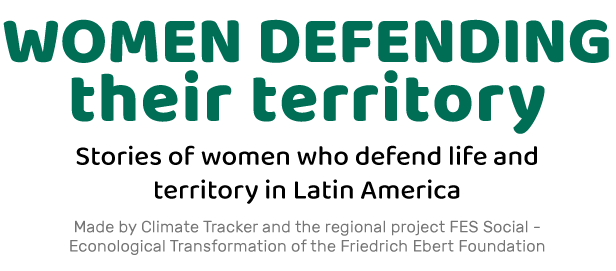









Leave a Reply